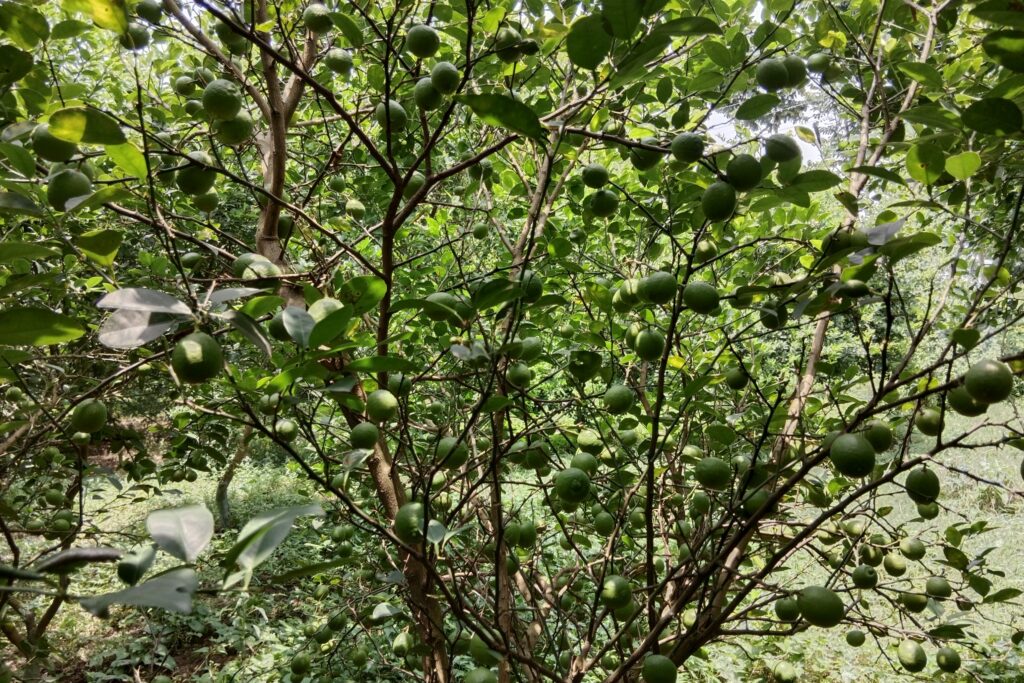Avocado growing is difficult and demands a high degree of skill to yield perfect avocados. Growers who want to increase avocado yields must have the necessary skills and expertise. The potential benefits exceed the effort because of the growing demand for this nutrient-dense fruit worldwide.
Avocado yields are generally low because of rapid vegetative growth, which can be controlled with good orchard methods. Cutting this growth may result in higher output. Photosynthesis, which depends on frequent exposure to sunshine, is essential for fruit production and healthy development. Avocado trees grow best in well-drained, organic matter-enriched soil that has a pH of 6.5 to 6.5. Improved soil fertility can be achieved by adding compost, and healthy roots depend on adequate aeration.
Regular maintenance is necessary to keep avocado plants productive, and farming practices might differ depending on the climate, geography, and type of plant used. To maximize productivity, careful planning, effective growing methods, and continuous observation are required. You can increase the number of avocados produced on your farm by putting the strategies covered in this article into practice.
8 strategies to increase avocado Production
Pruning and Training
Pruning and training avocado trees are crucial to ensuring they grow to their full potential. Pruning removes dead or damaged branches and promotes healthy growth, while training shapes the tree’s structure to ensure it grows in the right direction. Using stakes or trellises can support the trees and guide their growth.
A proven practice in avocado farming involves shaping the trees while they are still young. To foster lateral growth and achieve the ideal shape, pinch the tree’s terminal shoots beginning in its second growing season. Not training upright-growing varieties as young trees increases the difficulty of collecting their fruit and adds to the time required for farming operations.
To maintain growth and provide adequate light and air circulation, mature avocado trees must be pruned. Trimming back overgrown branches to make the tree more farmable and thinning out the canopy to allow light and air to enter are two examples of light pruning that can be done all year round. Trim each branch tip to no more than one-third of its total length to maintain the tree compact.
Fertilizing and Irrigation
Fertilizing and irrigation are crucial in avocado farming, playing a significant role in determining the yield and quality of the avocados. Avocado trees require regular watering, especially during the dry season, ensuring the soil remains moist at all times. Proper fertilization is essential, applying the right amount of fertilizer to provide the trees with necessary nutrients for healthy growth.
Successful avocado farming relies heavily on organic matter, which keeps the soil moist and supplies essential minerals like nitrogen, phosphorus, and potassium. Poor soil can benefit from the addition of aged manure or compost, which improves root growth and oxygenation by reducing the negative effects of overwatering.
Most of the minerals needed for growing avocados are usually found in sufficient amounts in the soil, although occasionally plants may be deficient in important micronutrients like iron or zinc. These deficits can be addressed by foliar feeding with a liquid-chelated micronutrient solution.
It is advantageous to treat the soil with sulfated forms of micronutrients, such as zinc and iron sulfates, for high-yielding avocado farming. It has been demonstrated that phosphorus can boost yield by 50% or more in just six years. Furthermore, liming has been shown to lessen avocado tree root rot in early plants. It has been demonstrated that yearly applications of gypsum and liming material in moderate amounts boost avocado yields.
Watering to increase avocado production
For farming success, water young avocado trees 2-3 times a week. After about a year, when the plant’s roots have grown deeper into the soil, weekly watering will suffice, reducing overall water usage. Always wait until the soil has dried out slightly before each watering. Mature avocado trees require about 2 inches (50 mm) of water per week, while seedlings need much less.
A traditional method to check soil moisture is to squeeze the earth around the roots; if your handprint remains visible, the soil is properly moistened. Adjust your watering schedule as temperatures and sunshine levels change and consider using tensiometers between April 1 and June 30 to monitor the root zone, keeping readings under 20 centibars and avoiding levels over 40 centibars during this critical period.
Avocado trees are known for their high water consumption, with mature trees typically needing between 40 and 50 inches (1,000 to 1,300 millimeters) of rain annually. The exact amount of water required varies based on climate, soil type, and tree age. It is important to schedule irrigation separately for healthy and diseased trees and to be cautious not to over-irrigate avocados on problematic soils. Careful management ensures optimal growth and productivity for avocado farming.
Bees
In an avocado grove, you should have at least one hive per acre, ideally two, to optimize avocado pollination. Bees are almost everywhere since they may go up to 2 km from their colony. If there are citrus plants close by, a lot of bees will, nevertheless, fly away from your orchard. Nearly all avocado fruits require a visit from a pollinating insect to their female-stage flower because avocados need pollination to set fruit.
Growers can effectively boost the fruitfulness of avocado trees by adding more bee hives to the grove. More bees mean more flowers are visited, which increases the likelihood of cross- or self-pollination, which is frequently difficult in avocado trees. While some hive groupings are convenient, groups that are no more than a few hundred meters apart will benefit more from pollination. When bringing in the hives, wait until the avocado trees have begun to blossom to minimize bee diversion to competing blooms.
Cross-pollination can significantly increase commercial avocado sets. Intermixing A and B flowering types yields maximum benefits when mutual cross-pollinators have interlacing branches. Growing at least two compatible avocado varieties will improve cross-pollination. For small orchards, consider hand pollination to ensure fruit set.
Pollinizers
Plant an avocado cultivar that pollinates your Hass trees more effectively than the Hass tree itself. As ‘Hass’ trees frequently produce more fruit when they are close to B flower pollen donor trees, although this effect is not always consistent, take into consideration the necessity of cross-pollination.
Pollinizers are used by some farmers only as a source of pollen, and they are pruned as poles to reduce competition with the more valuable variety. Sufficient sunlight obtained through appropriate canopy management is necessary to guarantee high-quality fruit since uncontrolled canopy growth can result in a decline in productivity and quality within the orchard.
Girdling the branch increases avocado production
Girdling is a management technique that can be used specifically to improve fruit sets, though it’s neither required nor evident. Girdling in November has shown to be more successful than girdling in February or April, and October girdling might be even more successful. Girdling makes the blooms stronger and encourages the development of flowers, which makes them more resilient to stress than flowers on non-girdled trees.
Limb girdling, which entails cutting a strip of bark that is one centimeter or less in width from roughly half of the tree every year, is one particular method to improve fruit set. Enough check and treated trees must be randomly selected in order to calculate the advantages of girdling locally. The findings must be analyzed over a number of years. These trees require at least four weeks of cool fall and winter conditions before they bloom.
Pest and Disease Control
Avocado trees require good protection measures because they are susceptible to a variety of pests and diseases. Mites, thrips, and beetles are common pests that damage avocado trees. These pests can be controlled using chemical pesticides or alternative therapies. Diseases including powdery mildew, anthracnose, and root rot all present serious threats. While anthracnose can significantly impair fruit quality and result in significant post-harvest losses, Phytophthora-caused root rot is very severe and pervasive.
Heat Stress Prevention and Control
Extreme heat can severely impact avocado farming, especially towards the end of summer when trees are blooming and fruiting. Heat waves and hot winds during this period can cause significant issues, such as flower necrosis and fruit drops, leading to substantial yield losses. While mature avocado trees rarely suffer from sunburn, it is crucial to protect young trees from sun damage as they grow. Common practices include covering young trees with shade nets, painting trunks white, and planting overstory rows among the avocados to shield them from the sun’s harmful rays.
FAQs
Q1. When to fertilize an avocado?
In general, avocado trees and most other plants should be fertilized in the spring and summer, when they are experiencing vigorous growth. Fertilizer should be avoided throughout the winter months on your avocado tree. Time is of the essence. When it’s idle, like in the winter, it’s best to avoid doing things like fertilizer and trimming.
Mature avocado trees should only be fertilized in the spring and summer, but young trees can be fertilized every two to three months while they are dormant. Avocado trees develop healthily and produce a lot of fruit when the time and frequency of fertilization are balanced with the needs and growth phases of the tree.
Avocados are typically fertilized three times a year.
- Late February
Late February or early March is the best time to fertilize avocado trees. When fertilizing elder trees, choose a well-balanced fertilizer, that has equal amounts of nitrogen, phosphorus, and potassium. Being cautious not to get fertilizer in direct contact with the trunk, apply fertilizer evenly along the tree’s drip line. Promote the nutrients’ absorption into the soil by providing adequate irrigation to the region after application.
- June
Maybe a second application in late spring or early summer can help further with fruit growth. Frequent fertilization of avocado trees promotes vigorous growth, flowering, and an abundance of fruit.
- October
It is advised to apply fertilizer for the third time in October. Don’t fertilize when the plant is dormant, which is usually in the winter. The tree won’t use nutrients efficiently during this period due to its decreased metabolic activity.
Q2. How to increase the size of an avocado?
- Spray Calcium and boron.
- Spraying Calcium and Boron solution @ 1 mL/L during the early fruit developing stage increases avocado fruit size.
- Fertilizer application.
- Avocado plants need more potassium (K) compared to nitrogen (N) and phosphorus (P) during the fruit development phase.
- Apply Potassium (K) @ 100g / tree.
- Irrigation.
- Drought during the fruiting period in avocados will reduce fruit size and number.
- Hence, provide irrigation accordingly.
- 1st irrigation in March.
- 2nd irrigation in April
- 3rd irrigation in May.
- Thinning.
- Reducing fruits per branch increases fruit size and yield per plant.
- Fruit quality, size, and retention were all increased by trimming diseased and unproductive branches.
- Spray Gibberellic acid.
- Applying gibberellic acid @ 35 ppm resulted in larger fruit.
- Exogenous application of GA3 increased cell size.
Q3. What is the best time to grow avocados?
Avocados grow best between March and June, following the last frost. Because of the timing, the young trees can get established and become used to their new surroundings before winter arrives. Spring and early summer are the best times to plant because of the higher temperatures and longer days, which encourage strong roots and robust growth. Avocados can be planted in the fall in areas with mild winters; just make sure the trees have enough time to grow before the cold weather sets in. The trees flourish and have a better chance of having a fruitful growing season when the timing is right.



Pingback: How to quickly ripen an avocado? 5 Easy Tips. -